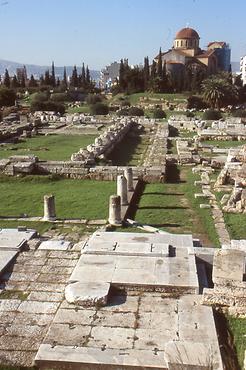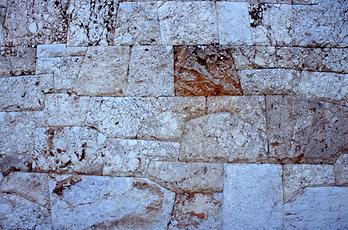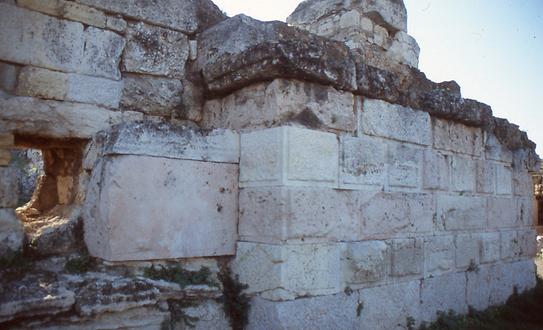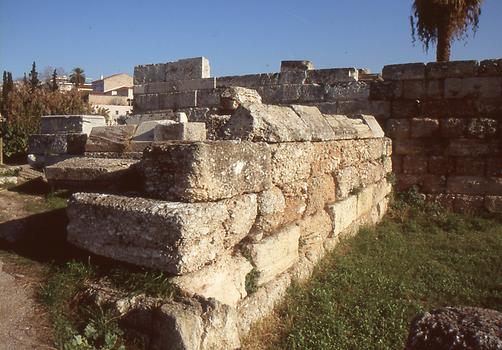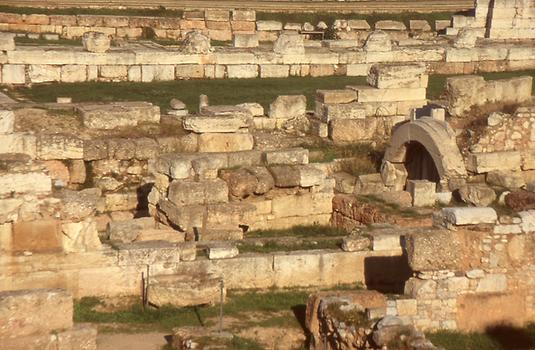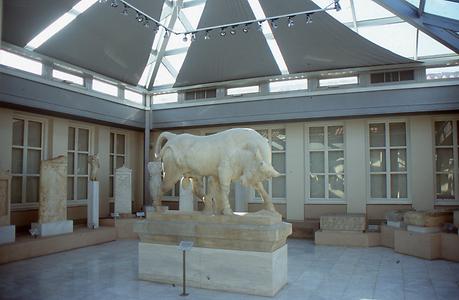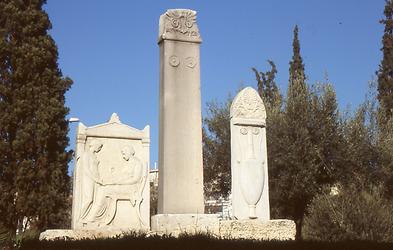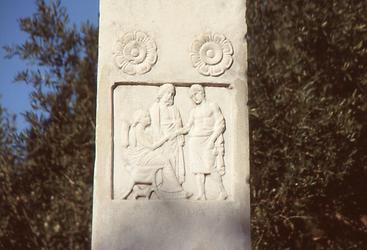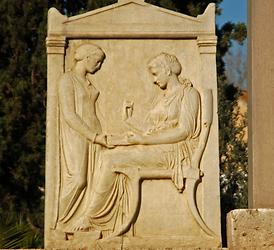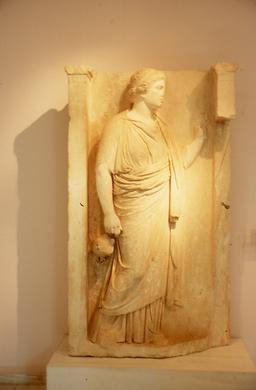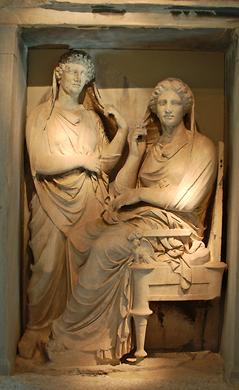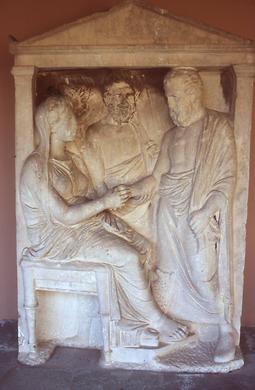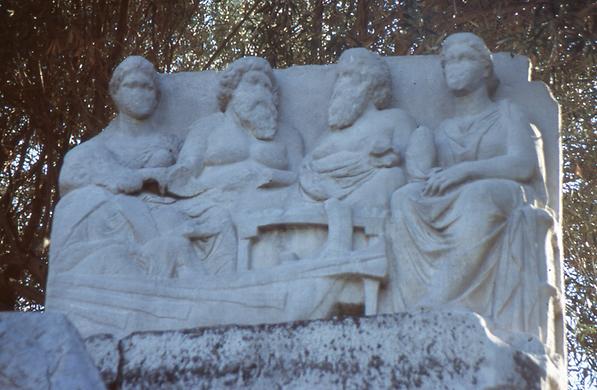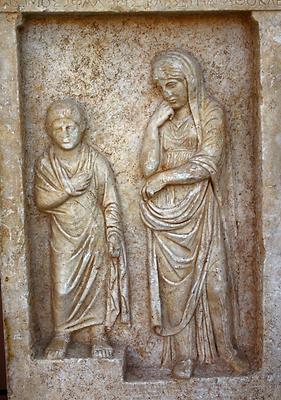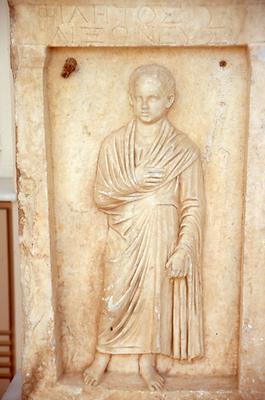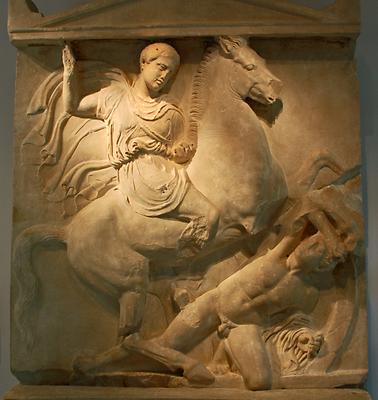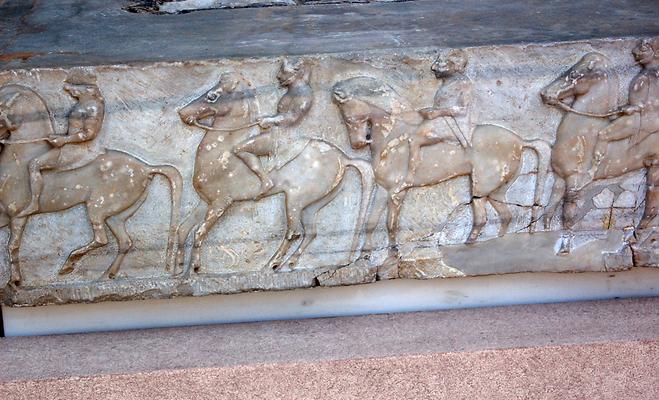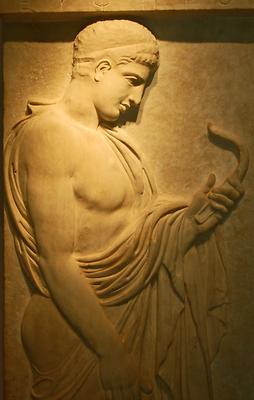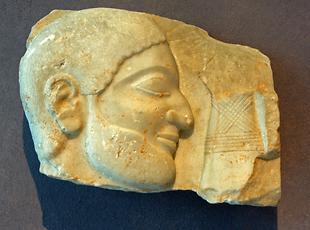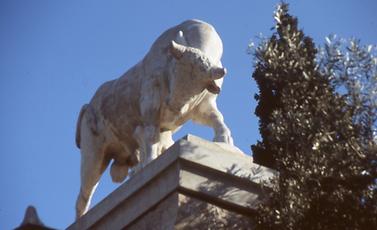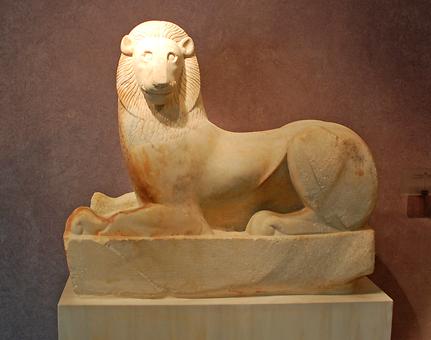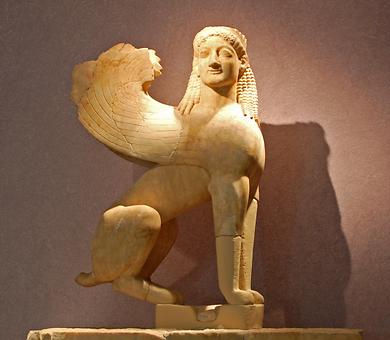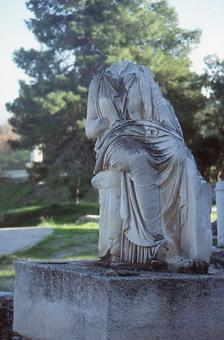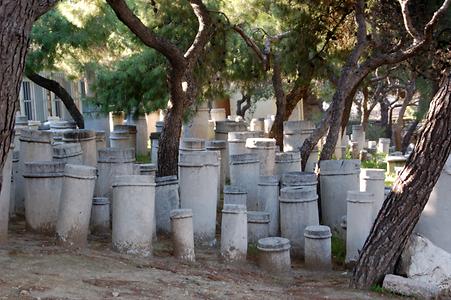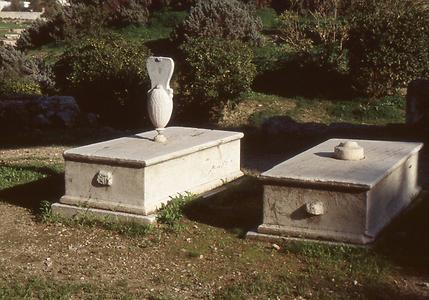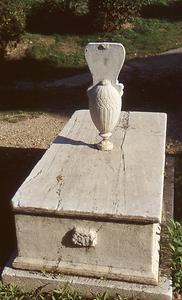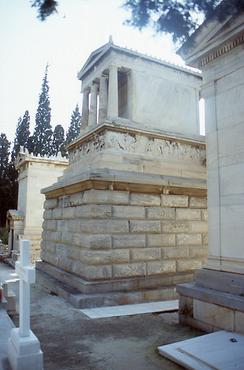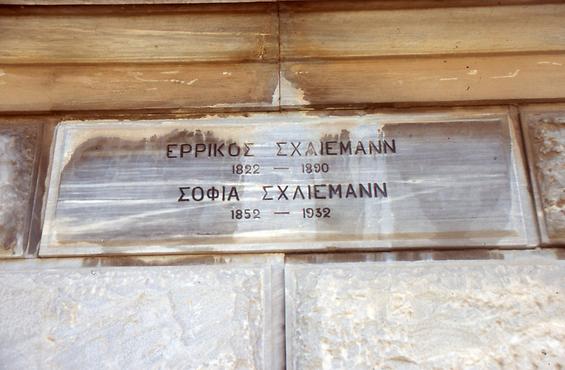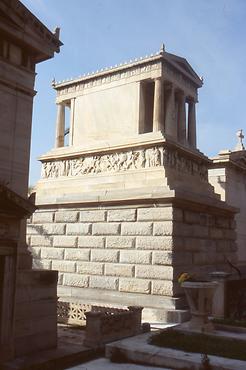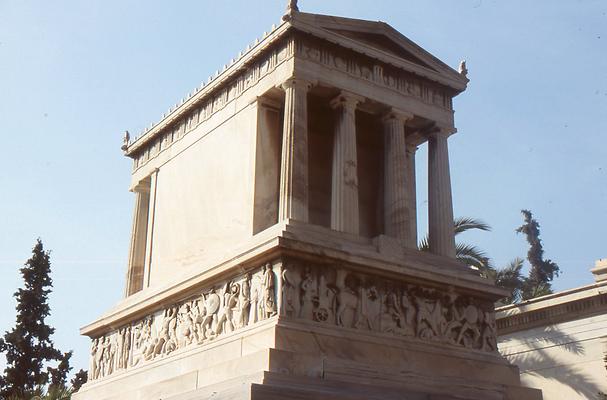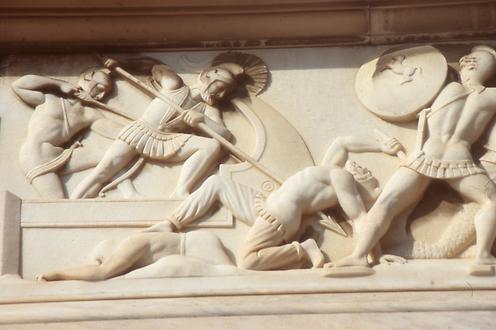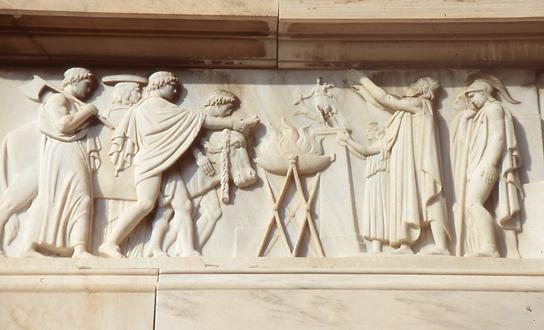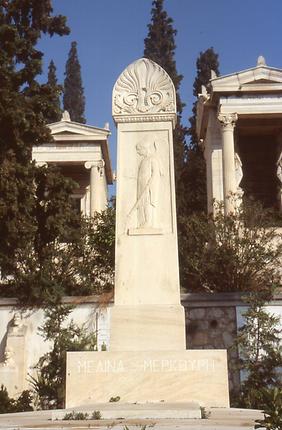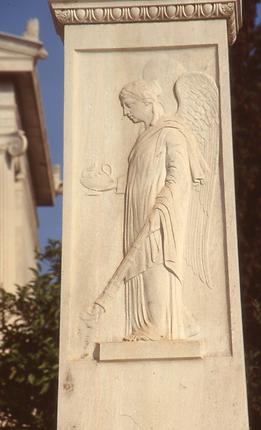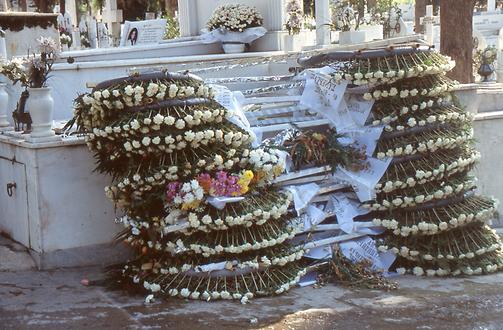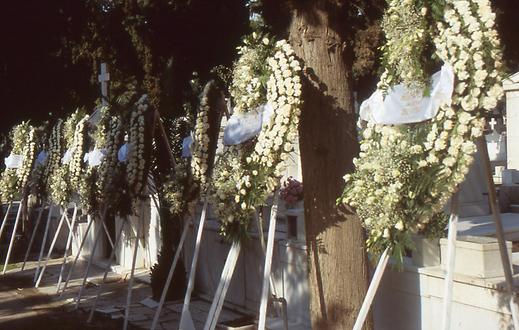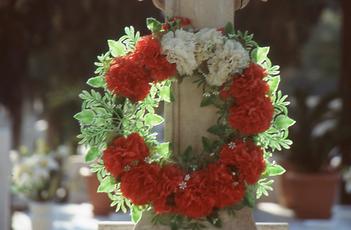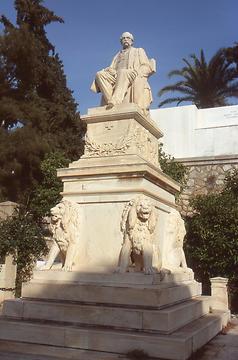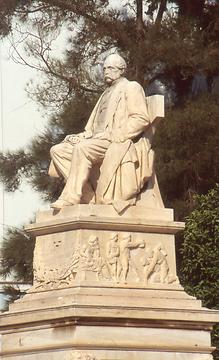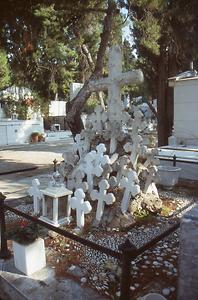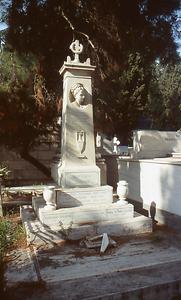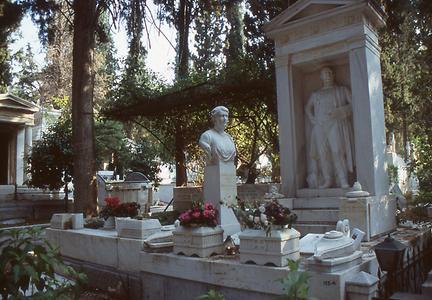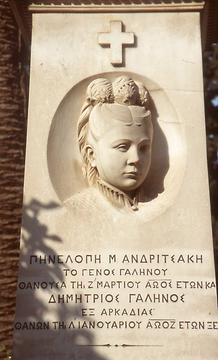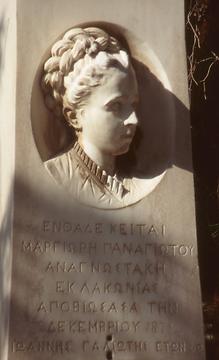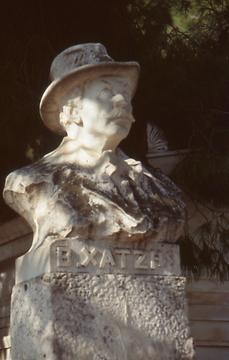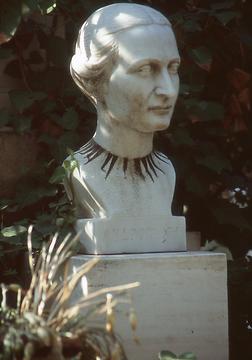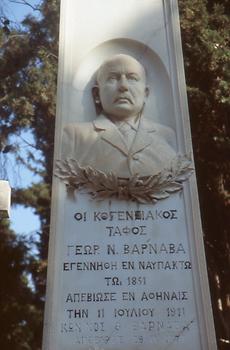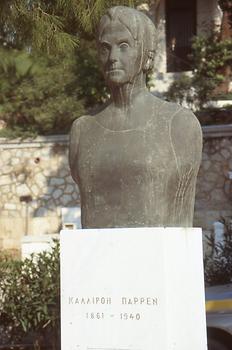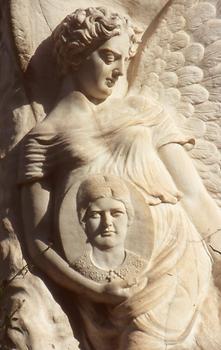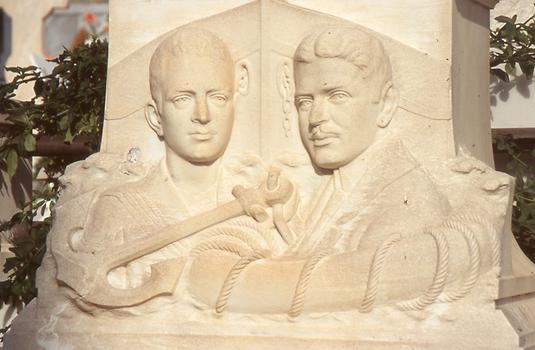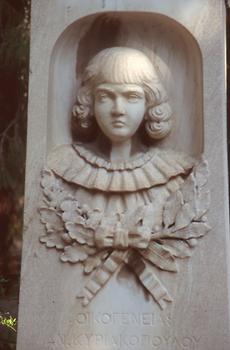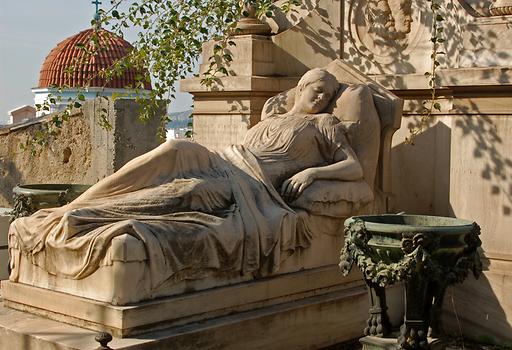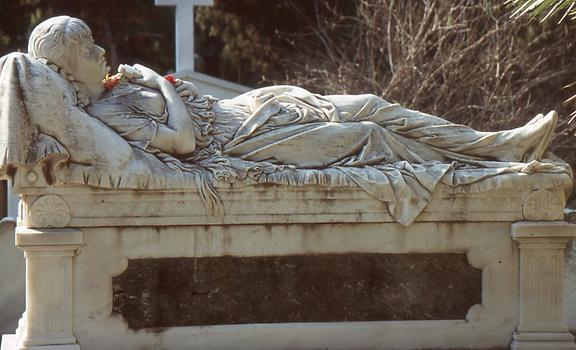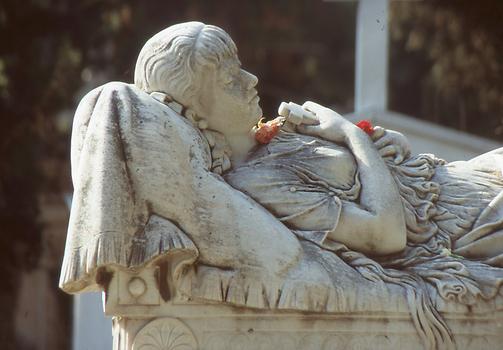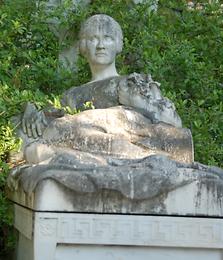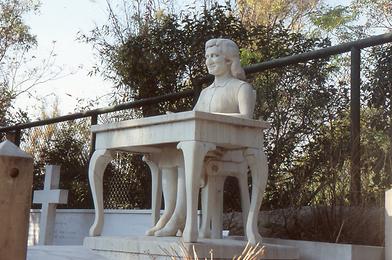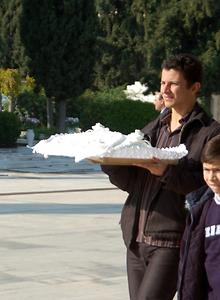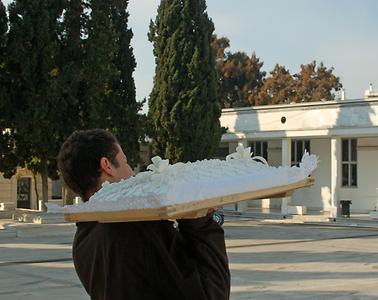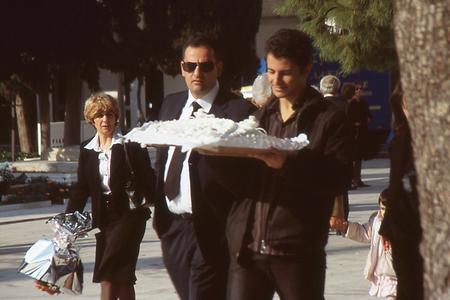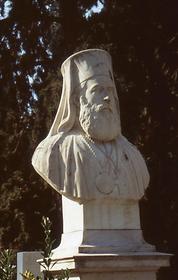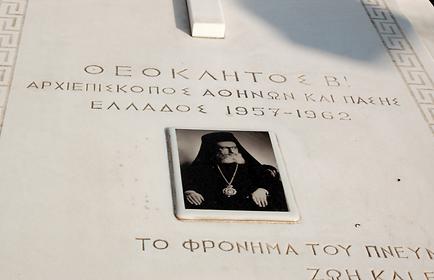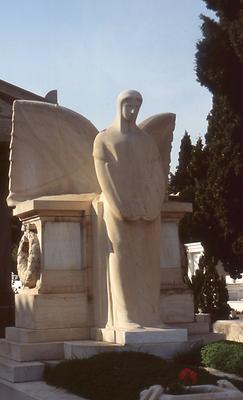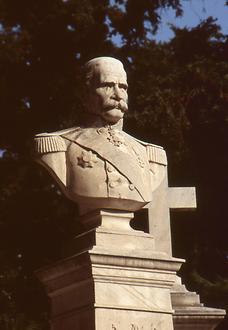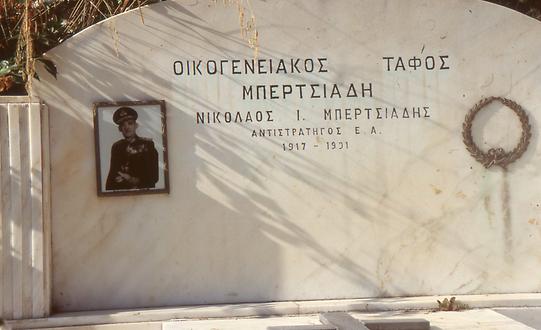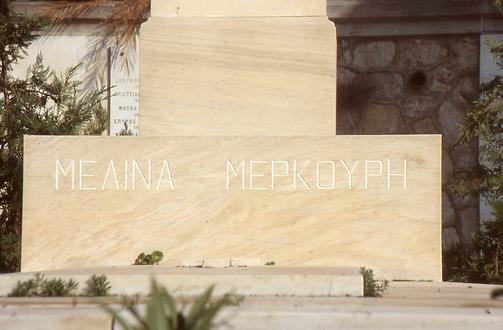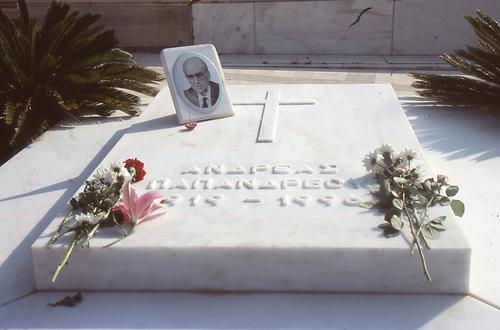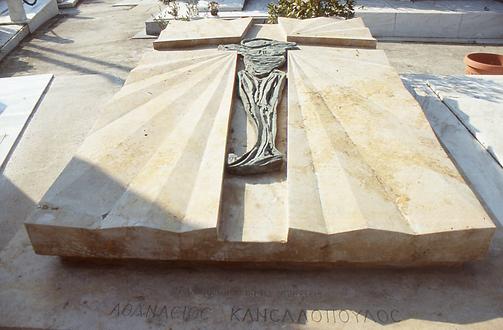From Hegeso to Schliemann#
Athens most famous churchyards- from antiquity to today#
By G. Jontes
The pictures were taken by the author in 2007 and are part of the archive „Picture Flood Jontes
General observations#
In ancient times, cemeteries were banished from the municipal city by Romans and Hellenes. Cemeteries had to be set up outside the city walls. Exceptions are the Roman Castle Sant Angelo, the tomb of Emperor Hadrian and the Burial Mounds of Augustus. This is due to the deification of rulers. The striving for a permanent presentation after death resulted in the creation of elaborate burial monuments especially on the main roads as can be seen clearly in the Via Appia Antica in the Roman Empire.In ancient Greece, similar things have happened. In the north of the city and still visible from the Acropolis, the most interesting cemetery- from a art history point of view- is located. It is situated in the quarter where potters were working and named after the centre of the ceramists of Athens and Attica Kerameikos.
Keramikos#
Forgotten in the Middle Ages and buried under the burden of centuries, it was rediscovered in 1861 when constructing a street. It was subsequently explored by German archaeologists since 1913 and thus returned to mankind.The main road went through two gates – therefore called Dipylon gates - one way went through the Holy Gate to the important sanctuary Eleusis, the other way to Athens. From here, the procession of the Panathenies in honour of the city god Pallas Athena moved to the sanctuary on the Acropolis. Graves from the third millennium BC to the Roman Period follow the course of history. Even Pericles the great statesman and builder of the classical Acropolis who died 429 BC, and Kleisthenes who died after 507 BC, and paved the way for the Attic democracy were buried here. However, their graves are no longer known.
Today, the Kerameikos is not among the places of mass tourism. It is silent and there are no noisy transport routes passing by. The little stream Eridanos flows gently and slowly through the terrain and forms reed islands. Whoever is sitting here in devotion may meet a turtle, a Greek tortoise, which crosses calmly the path as if it has been here from the beginning for centuries.
The terrain is structured by mighty walls, the oldest of which is built in the style of cyclopean masonry. Such walls are also cordoning off graves of single noble families or large families.
In the course of decades-long excavations which still continue many tomb steles and other monuments have been found. The most important examples are now in the National Museum in Athens. Others which are also of highest artistic quality are exhibited in a small but well-maintained museum in Kerameikos.
Outdoors, the tomb steles are mostly replaced by authentic copies.
The forms of burial and the burial traditions are closely connected with the beliefs in an afterlife. Dying and death are central topics of antique philosophy, at the cradle of which stands Hellas. Epicurus thinks that the death does not cause him troubles at all, because: If I am, death is absent – if death is here than I am not. According to Plato death is the separation of body and soul which can be already achieved on earth through ascetic and meditative life.
Common former beliefs say that when a person dies, his soul or his identity has to go to the underworld, the Hades. The ferryman Charon takes him across the river Styx. A small coin, the Obol, which is put in the mouth or on the eyes of the dead, represents the fare. When drinking water from the river Lethe, the dead leaves everything behind him that ties him to life including all memories. In the future, he is moving along as a joyless but also painless shadow. A punishing righteousness does not exist.
Such conceptions are surprisingly unemotional. There is no hope of salvation after a life full of work and troubles. Sufferings and sorrows do not exist. It is therefore not surprising that religions and beliefs such as the Christianity, the Isis Cult and the Mithras Cult were so successful later-on.
In fact, Gods carried away heroes which were given immortality into a paradisical area at the very edge of the flat earth surrounded by the Oceanos. This area was the Elysion Pedion, the blessed realm which the Romans and also we call Elysium. Later-on, poets like Vergil relocated the Elysium into the underworld where religious and fair people find a place in a privileged corner.
The figural grave steles of the Kerameikos are characterized by philosophical serenity. The word stele means column, gravestone. Each has a name and picture and ends upwardly with leaves and flowers called anthemion.
The grave-area of Koroibos with its steles#
The stele of Hegeso which was excavated in 1870 is considered to be the most beautiful and stirring of the Attic art of tomb stones. The original is in the Athens National Museum.
An everyday scene is integrated in the architecture and is crowned by a gable. The relief of pentelic marble is 1,56m high. According to the style and the perfect technical design it was created by the famous sculptor Kallimachos or by somebody of his fellows in the workshop at the end of the 5th century BC. An inscription says that the represented person is Hegeso Proxene, i.e. the woman or daughter of a man called Proxenos.
You don’t feel death or sadness, neihter in reality nor in symbols. There is a young woman dressed in a folded robe and with loosened sandals who is sitting on an elegant chair with armrests. In front of her there is a maid who is proportionaly a bit smaller and thus expresses her subordinated position in the household. The type of the robe and the bonnet which covers her hair show her as a slave. She gives a jewellery box to her lady from which Hegeso takes a piece and is looking at it. The representation communicates tranquillity and calmness. The viewer is fascinated by the harmony of acting and wanting. Death and glorification without pathos has nothing to do with the joyless life in Hades. This stele shows us a relaxed domestic scene. Let it have an effect on you for some time and compare it with your ideas about death and life.
Many other steles of Kerameikos don’t depict the irreversibility of death. Many are the affectionate gestures of a gentle farewell to the family, the spouses, the children and the elderly. Although many of them don’t reach the quality of the stele of Hegeso, they are also deeply touching.
The depiction of the remarkable grave stone of Dexileos is unusual with respect to its dynamics. Dexileos accompanied the commander-in-chief as adjutant in the Corinthian war (395 – 387 v. Chr.) and died in a battle at the age of only twenty years.
The frieze of young men on horseback reminds us of the Panathenae feast which started at the Dipylon.
This athlete looks sensuously at the strigil, a tool used to scrape the body from adhering oil after a sportive fight or training. He has almost finnishe his task and carelessly puts on his robe. He has still to remove the headband. It is the question whether his fine smiling refers to a victorious competition. In any case, it represents the perfect inner harmony of this young person after the agon (contest).
The fragment of a full-bearded man's head from the time of the strict style is adorned by an almost transcendent smile.
The bull of the tomb of Dionysios of Kollitos is unique in its size and artistic expression. Tomb guards in the shape of mythical lions and chimeras were also excavated. This life-size funeral sculpture of a lady in a beautifully ruffled robe follows the Roman individual style.The accumulation of urn steles is due to other burial traditions.
Leap in time over millennia#
In 1829, after a long war of liberation against the Turks, Greece obtained national independence and trusted the royal family of Wittelbacher with its fate. In the year 1933 Otto I. moved to Athens as King of the Hellenes and made Athens his capital. Out of a small settlement of 4000 inhabitants Athens became a capital which spread to all directions due to immigration of numerous officials, artists and tradesmen.
In 1834, the Greek Orthodox Church decided to forbid burials around their churches. A new burial order said that future cemeteries have to be set not less than 100 meters away from human settlements. The other confessions could keep their churchyards. The first cemetery of Athens (in Greek: Próto Nekrotapheio Athinón) was set up south of Athens. Since its foundation this cemetery is the oldest one in use in the city and at the same time today’s most important in art-historical terms.
Especially one monument attracts the eye of the visitors. It is the tomb of the most important German in Greece, Heinrich Schliemann (1822-1820) and his Greek wife Sophia (1852-1932). He gave back Troja and Mykene to the Greek and to mankind. The proportions are according to the classical temple of Athena Nike. The plans of this neoclassical construction were made by the German architect Ernst Ziller.
Neoclassicism determines the character of this Athens central cemetery of Athens. An antique-like palmette stele with the relief of a mourning genius with a lowered torch could also stand at the antique Kerameikos.
An angel as spiritual father#
Funeral wreaths are laid at funerals of rich families in a big quantity. The traditional mourning colour is white. It expresses the unadornedness in death in terms of colour.
Easy-care and permanent mourning decoration made of plastic start to be a bad habit also in Athens.
One of the most impressive monuments is the tomb of Georgios Averoff, one of the richest businessmen of Greece. He is still admired as one of the most generous philanthropists who financed not only many schools but also the Polytechnic University and the Military Academy. In 1896, on the occasion of the rebirth of the Olympic Games the completion of the Panathinaikon-stadium was threatening to collapse due to the fiscal crisis of the state. There were already intentions to relocate the Olympic games. However, Georgios Averoff financed the completion of the stadium. Therefore, the reliefs on his tomb where he sits enthroned depict antique athletic competitions.
The first Athenian cemetery is characterized by the liberal spirit of the Athenian haute bourgeoisie. Depictions of crosses like in Catholic tombs are rare. On this grave, a separate simple cross was placed for each deceased member of the family so that a hill full of crosses was formed. Moreover, the family presentation of social and financial importance leads to the erection of immense monuments which refer to the personalities of the deceased.
Depictions of the total body are exceptions. Most frequently, the chest piece with head and shoulder part is carved in full detail or in portrait relief. Greece has overabundant types of excellent marble. This one can observe here well.
Two funeral sculptures of resting and sleeping young women attract the visitors. These are the tombs of Sophia Aphendaki and another female figure: Human beauty rescued beyond death.
Activity and the will to work are also depicted. It can turn ridiculous when the bottom side of a writing table is emphasized.
In Greece, there is still the very old custom that reminds one of antique memorial meals for decedents, the so-called agape. On anniversary dates, family members gather at the tomb and eat together a cake to the memory of the deceased person.
Many different social ranks are gathered at the Próto Nekrotapheio Athinón. The clergy buries even orthodox princes of the church. But also orthodox priests who are adored and loved by the community find here their final resting place.
Since the almost 200 years of existence as an independent modern state Greece has lived through many wars. Despite lost campaigns the military has not lost its importance in the state structure. This is proven by tombs from the past and the present.
Finally, also artists and actors such as the politician who concerned herself with cultural and educational policies Melina Merkouri and the Prime Minister Andreas Papandreou were buried at a prominent place.
There are also new forms of grave design which are slowly entering in the cemetery. The culture of funerals is very conservative. On the threshold between life and death people reluctantly abandon traditional customs. However, modernity is perceptible and closes the circle which Athenians cemeteries started three thousand years ago.

